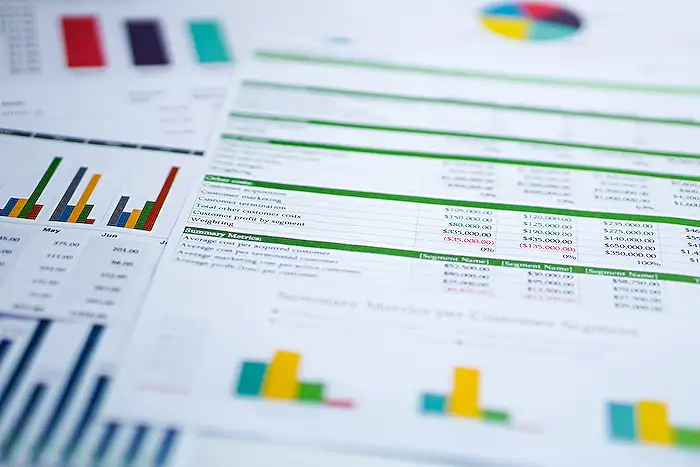
Excel
Jan 16, 2025 7:01 PM
Excel Unleashed: Master GROUPBY for Text & Custom Function Magic!
by HubSite 365 about David Benaim
Excel, GROUPBY, PIVOTBY, ARRAYTOTEXT, LAMBDA
Key insights
- GROUPBY and PIVOTBY are new Excel functions that allow text aggregation and custom aggregations using the LAMBDA function, enhancing PivotTable capabilities.
- The syntax for GROUPBY includes specifying arrays, group-by columns, and optional aggregation functions, allowing advanced data manipulation without helper columns.
- Examples demonstrate combining text from a group using TEXTJOIN in LAMBDA or counting unique items with UNIQUE and COUNTA within GROUPBY.
- PIVOTBY extends GROUPBY by adding column fields and offering additional options like percentage calculations; it can handle multi-dimensional data analysis.
- Built-in aggregation functions include SUM, AVERAGE, MIN, MAX, with unique features such as ARRAYTOTEXT for creating comma-separated lists in GROUPBY.
- Charts and slicers can be based on dynamic arrays created by GROUPBY/PIVOTBY, offering flexibility beyond traditional PivotTables for interactive dashboards.
Introduction to GROUPBY and PIVOTBY Functions in Excel
Excel has always been a powerful tool for data analysis, and with the introduction of the new GROUPBY and PIVOTBY functions, it has taken a significant leap forward. These functions replicate the functionality of PivotTables using formulas, making data aggregation more dynamic and flexible. In a recent YouTube video by David Benaim, these functions are explored in depth, showcasing their potential to transform how we handle data in Excel. This article will delve into the key aspects of these functions, comparing them with traditional PivotTables and highlighting their unique features.Understanding the Syntax and Use Cases
The GROUPBY function in Excel is designed to group data by one or more columns and apply custom aggregation logic. It is available in Excel 365 and Excel 2021 as part of the new array formulas. The syntax for GROUPBY is as follows: =GROUPBY(array, group_by_column1, [group_by_column2], …, [aggregation_function])- array: The range or table to group.
- group_by_column1, group_by_column2, …: Columns to group by.
- aggregation_function: (Optional) A lambda function defining how to aggregate values.
Comparing GROUPBY and PIVOTBY with PivotTables
PivotTables have long been a staple in Excel for data aggregation, but they come with limitations. They cannot aggregate text beyond counting, and they require manual refreshing. In contrast, the GROUPBY and PIVOTBY functions refresh automatically and can return additional functions like a concatenated list of values. They also allow for the creation of any chart type, whereas PivotTables have limitations in this area. However, PivotTables are easier to create for those unfamiliar with coding or formulas. They also offer more granular formatting options and can group dates and continuous variables for easy aggregation. Despite these advantages, the new functions provide a level of flexibility and automation that is hard to match.Built-in Aggregation Functions and Custom Aggregations
Both GROUPBY and PIVOTBY offer built-in aggregation functions such as SUM, COUNTA, and AVERAGE. However, they also allow for custom aggregations using LAMBDA functions. For example, you can use LAMBDA to create unique aggregations like distinct counts or distinct lists. This is particularly useful for creating custom measures that are not available in PivotTables. Moreover, GROUPBY includes additional statistical measures like MEDIAN and MODE.SNGL, which are not available in PivotTables. On the other hand, PivotTables provide multiple options under "Show Values As," including ranking and running totals, which GROUPBY and PIVOTBY do not offer.Challenges and Trade-offs in Using GROUPBY and PIVOTBY
While the new functions offer significant advantages, they also come with challenges. For instance, the syntax can be complex for beginners, and the lack of intuitive formatting options can be a drawback. Additionally, these functions are only available in Excel 365 and Excel 2021, limiting their accessibility to users with older versions of Excel. Another challenge is the need for a deeper understanding of Excel's array formulas and LAMBDA functions. Users must balance the flexibility and power of these functions with the learning curve required to use them effectively. Despite these challenges, the benefits of dynamic and automated data aggregation make these functions a valuable addition to Excel's toolkit.Conclusion
The introduction of GROUPBY and PIVOTBY functions in Excel marks a significant advancement in data analysis capabilities. By offering dynamic and flexible aggregation options, these functions provide a powerful alternative to traditional PivotTables. While there are challenges and trade-offs involved in using these functions, the potential for more automated and customized data analysis makes them an exciting development for Excel users. As more users become familiar with these functions, they are likely to become an integral part of data analysis workflows.

Keywords
GROUPBY Excel, combining text Excel, custom functions Excel, GROUPBY tutorial, Excel data analysis, advanced Excel techniques, GROUPBY examples, Excel formula tips
HubSite 365 Apps